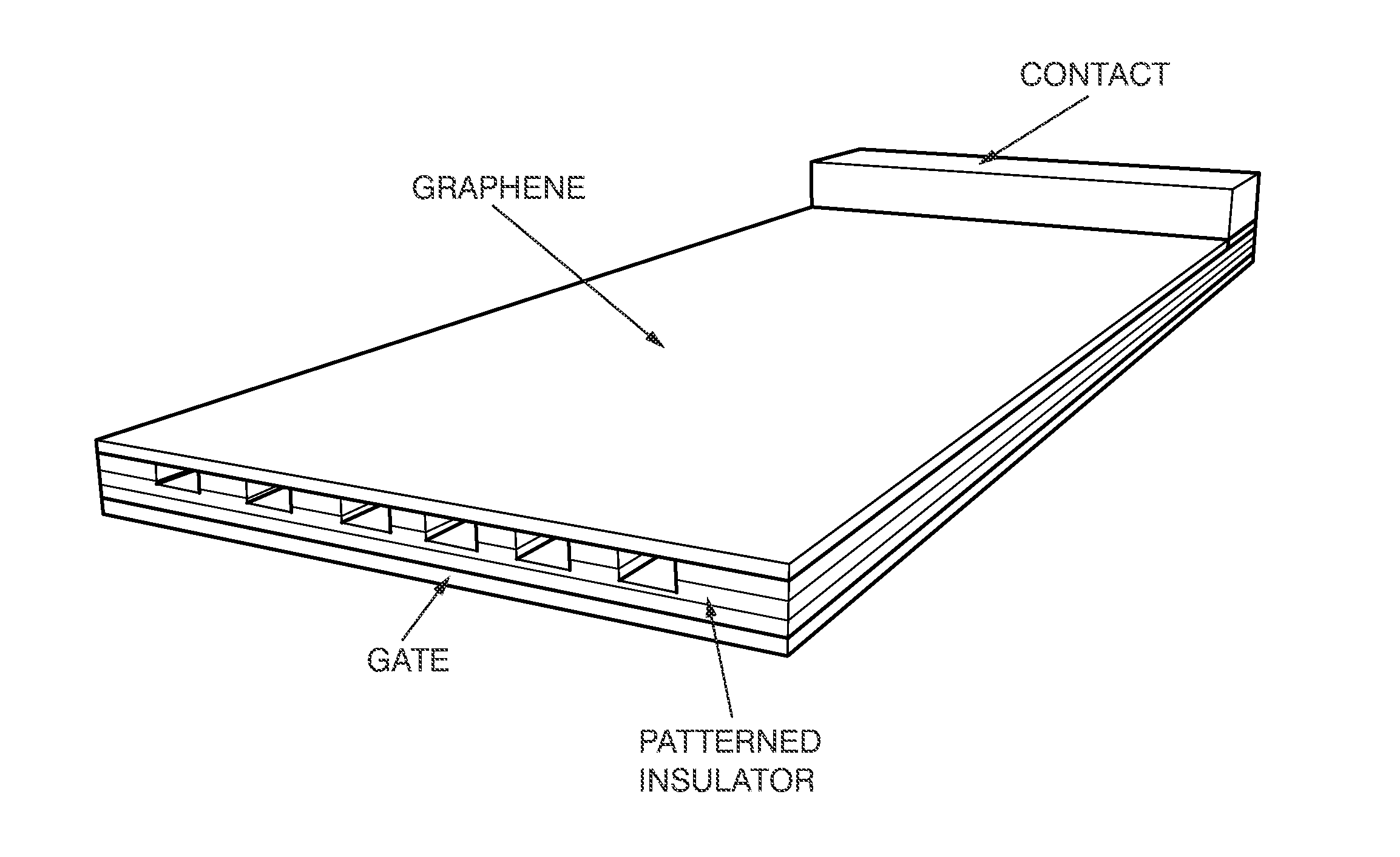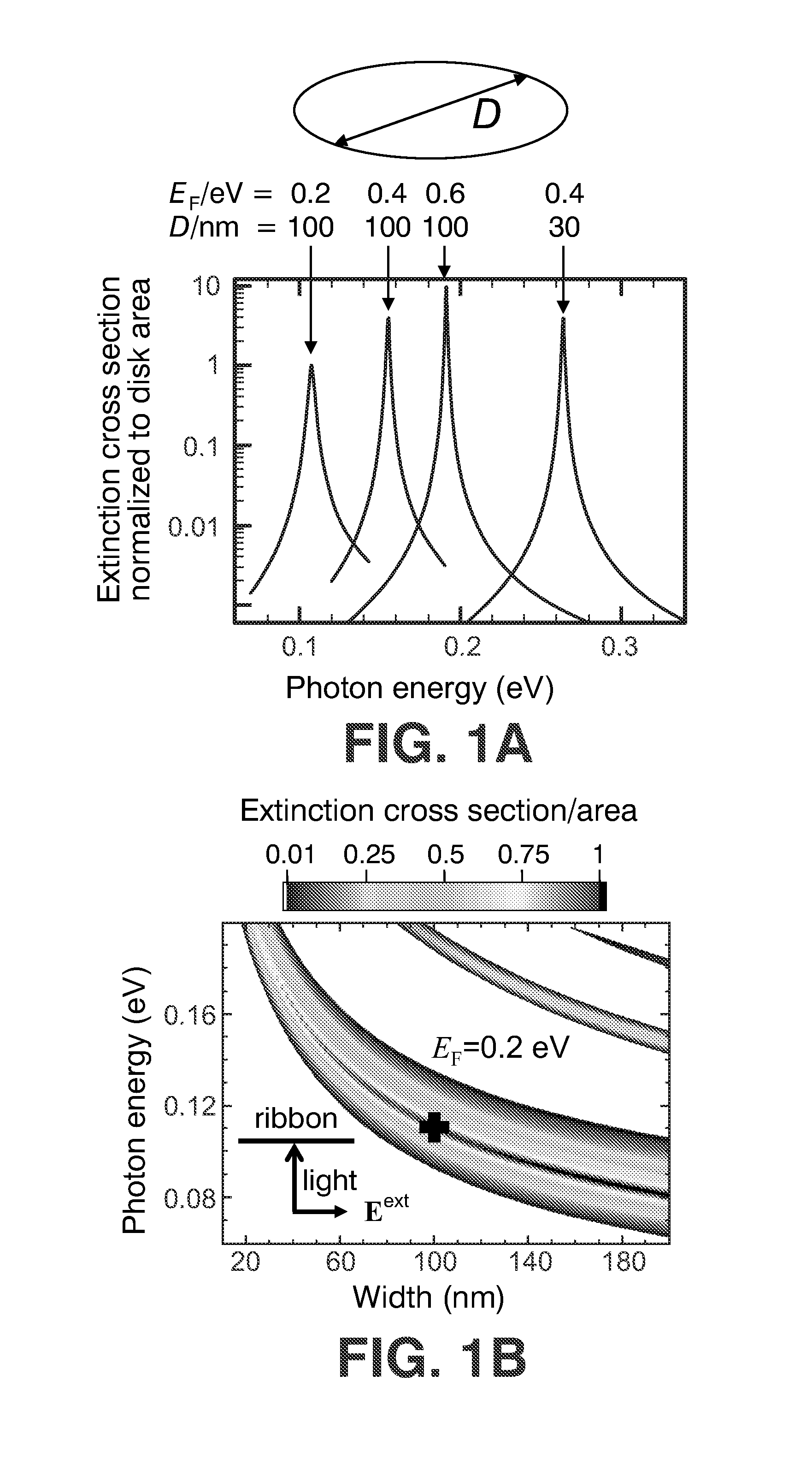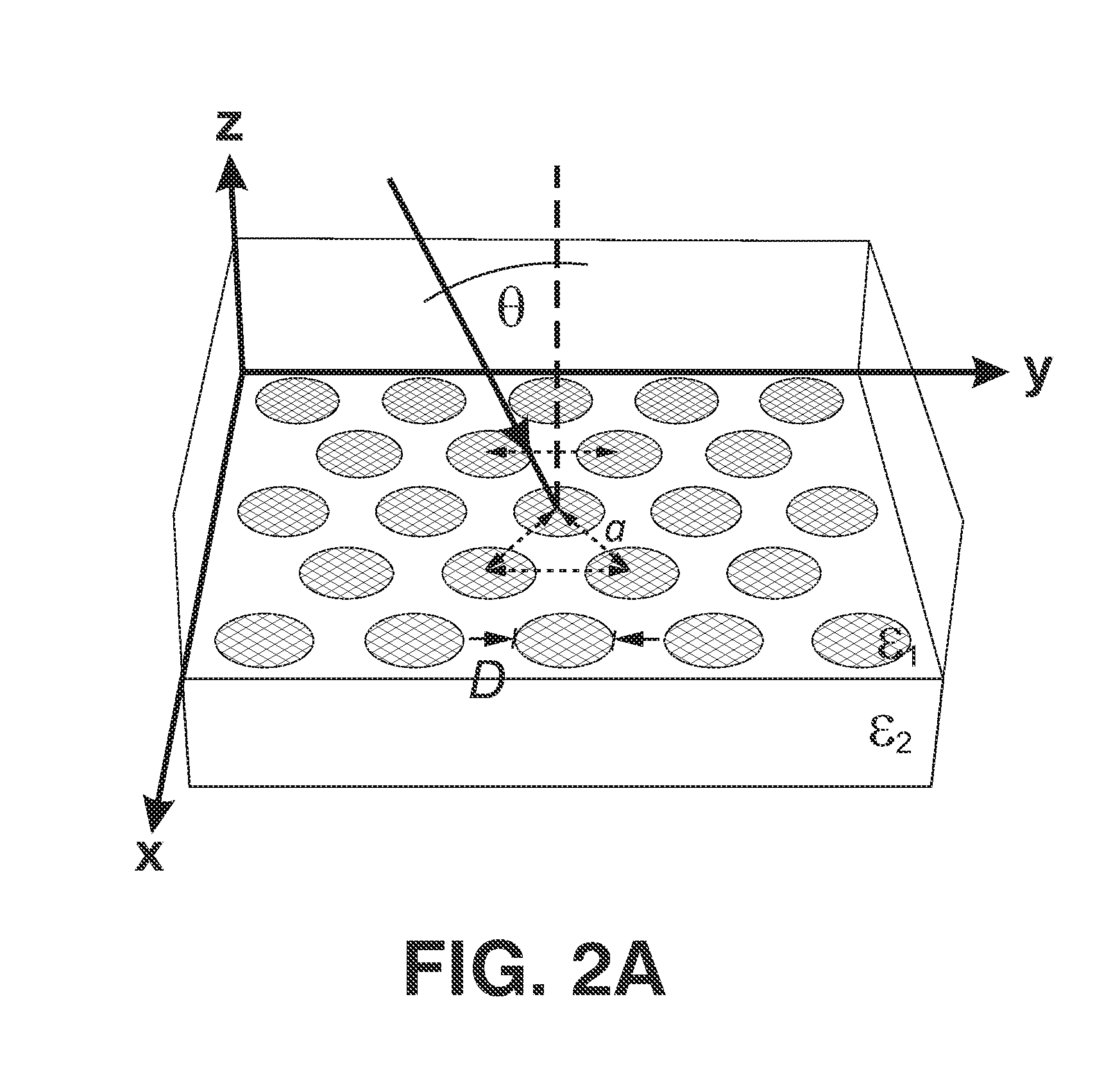Photoconversion device with enhanced photon absorption
a technology of photon absorption and conversion device, which is applied in the field of photoconversion device, can solve the problems of in-situ tunability of absorption spectrum of devices, and none of these technologies have enabled the conversion of absorbed light into electrical signals
- Summary
- Abstract
- Description
- Claims
- Application Information
AI Technical Summary
Benefits of technology
Problems solved by technology
Method used
Image
Examples
Embodiment Construction
[0028]The individual graphene structures of the present invention are able to absorb light very efficiently. We show in FIG. 1 calculated results for the cross section of nanodisks and nanoribbons. These calculations, and the ones discussed below, are performed by solving Maxwell's equations using a realistic description of the graphene using the local random-phase approximation [F. H. L. Koppens, D. E. Chang, and F. J. Garcia de Abajo, Graphene Plasmonics: A Platform for Strong Light-Matter interactions, Nano Letters 11, 3370-3377 (2011)]. For disks (FIG. 1A), the diameter and Fermi energy (i.e., the level of doping) is indicated for each absorption spectrum. For ribbons (FIG. 1B), we represent the absorption cross section as a function of ribbon width for fixed Fermi energy (0.2 eV). The absorption cross section is defined as the effective area on which impinging light is absorbed. The plots here show a large increase in the absorption cross-section at specific light wavelengths c...
PUM
 Login to View More
Login to View More Abstract
Description
Claims
Application Information
 Login to View More
Login to View More - R&D
- Intellectual Property
- Life Sciences
- Materials
- Tech Scout
- Unparalleled Data Quality
- Higher Quality Content
- 60% Fewer Hallucinations
Browse by: Latest US Patents, China's latest patents, Technical Efficacy Thesaurus, Application Domain, Technology Topic, Popular Technical Reports.
© 2025 PatSnap. All rights reserved.Legal|Privacy policy|Modern Slavery Act Transparency Statement|Sitemap|About US| Contact US: help@patsnap.com



